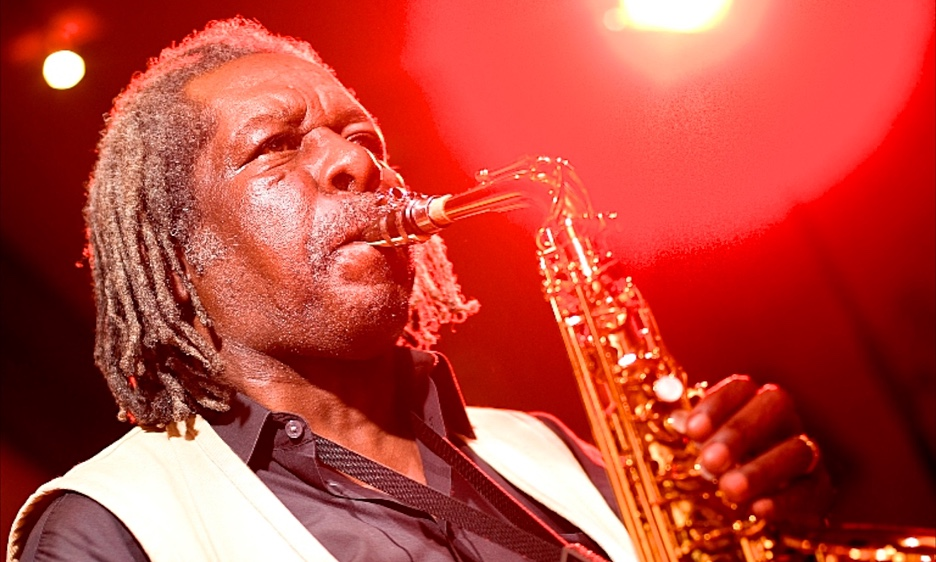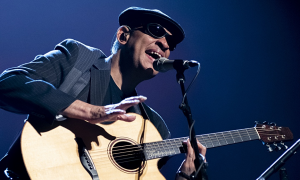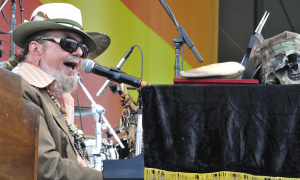Home » Jazz Articles » Jazzmatazz » Remembering Saxophonist, teacher, and composer Carl Grubbs
Remembering Saxophonist, teacher, and composer Carl Grubbs

Every time I listen to music, I'm looking for that aspect of storytelling and emotion that he had in his playing.
—Ephraim Dorsey
Even as his health worsened over the past year, Grubbs continued to see students, determined to make sure jazz continued to the next generation.
"How else can the music live," his wife of 40 years Barbara Grubbs said. "If you don't pass it on to kids?"
Grubbs died on January 5 at Baltimore's Mercy Medical Center at the age of 79.
Grubbs spent some of his formative years learning under one of the best mentors a young saxophonist could ask for, legendary musician John Coltrane.
Grubbs knew Coltrane through his cousin Juanita Grubbs, the subject of Coltrane's composition "Naima." Grubbs had an inside look at the creation of one of the most iconic jazz compositions of all time "Giant Steps." He saw Coltrane practice the intervals and melodies that would later make up the composition. One of his favorite stories to tell a crowd was the time Coltrane put the chords of the difficult standard in front of pianist Bobby Timmons written out on a brown paper bag. As a musician Grubbs would apply the iconic Coltrane changes in "Giant Steps" to standards and his own compositions.
His first band to achieve noteworthy success, The Visitors with his brother Earl Grubbs, carried a strong influence from Coltrane's later "Spiritual Jazz" work. The Coltrane influence combined with a bluesy style stood out about Grubbs to John Goldsmith, the drummer for The Visitors throughout the 1970's. Grubbs' home in Philadelphia quickly became well known in the neighborhood and countless people would gather outside to listen to Grubbs and The Visitors practice, he added. The group released several albums during the '70s featuring performers who would later become legends in their own right like bassist Stanley Clarke and pianist Kenny Barron.
The Visitors led to Grubbs meeting his second wife Barbara Grubbs at a tribute concert to John Coltrane at Coppin State University in Baltimore in 1976. The future couple bonded over breakfast mimosas followed by several jam sessions at clubs around the city.
"Other people I knew would constantly talk," Barbara Grubbs said. "What stood out about him is that he didn't."
The disco-era made it difficult for Grubbs to find work as more concert venues shifted to hiring DJ's, Barbara Grubbs said. He would continue to make a living as a musician playing with R&B and other groups in Philadelphia at a variety of clubs. He eventually moved to Baltimore in 1980. At first he found it difficult to find work but he eventually became a presence in the music scene in both Baltimore and D.C. Barbara, a long-time school administrator, partnered with him to start organizing concerts at Harborplace and other local venues.
The couple brought notable artists ranging from Pharoah Sanders to Muddy Waters to the waterfront venue, funded by a National Endowment Grant, the Rouse Corporation and the Merchants of Harborplace. He began composing a suite of music partially inspired by Harborplace in 1983 called The Inner Harbor Suite. The album, recorded in 1994, gained notoriety receiving favorable reviews in DownBeat and other publications. Grubbs and his wife founded Contemporary Arts Inc, in 1997 to organize more concerts and educational events.
As a musician Grubbs constantly evolved, incorporating new sounds and styles in his songs. After a meeting with Stanley Cowell, he became an early adopter of the music notation software Finale in the '90s helping him write music more rapidly than before.
Several visits to Latin America in the '90s helped deepen the Latin influence on his music, Barbara Grubbs said. His 2015 album The Inner Harbor Suite Revisited—a tribute to Baltimore, showcases his development. Grubbs added a string section to mix jazz and classical music in the recording, funded by a Rubys Artist Grant. The album was recorded at St. Paul's School in Baltimore County where Grubbs served as the director of the jazz band for many years. As a live musician Grubbs became known for having his backing band stop playing for a section of a song so he could perform an unaccompanied solo. His solo would still have a sense of form, with listeners sometimes able to tell the chord progression just from his melodies.
Outside of his recorded music and live performances, Grubbs began teaching in Baltimore to make sure jazz continued with the younger generation. He and Barbara Grubbs founded the SAX Music and Dance Camp in 1997 to provide two weeks of music education to young people. That effort combined with his private lessons to students helped create a community of people who learned how to play music from Grubbs.
A tribute concert organized by bass clarinetist Todd Marcus last year showcased the generations of people who Carl Grubbs touched. Young musicians like the siblings Ephraim and Ebban Dorsey paid tribute to someone multiple times older than them.
"A lot of musicians died during the pandemic," Marcus said. "I started thinking 'we need to do something while the two of them {Barbara and Carl Grubbs} are both here with us.'"
When Ephraim Dorsey met the elder Grubbs he was thinking of quitting the saxophone. The elementary schooler struggled to make the instrument sound right, the low notes were hard to play and the high notes sounded weak.
Grubbs gave Dorsey a simple piece of advice, changing how the elementary schooler placed the reed on his instrument, that changed his life. Instead of quitting, Dorsey became passionate about music. At the age of 11, Dorsey and his 10-year-old sister could already improvise over standards alongside Grubbs.
"Every time I listen to music, I'm looking for that aspect of storytelling and emotion that he had in his playing," Dorsey said.
The Dorsey's are now considered some of the finest young musicians in Baltimore, both pursuing degrees at the Peabody Institute. Grubbs remained supportive of the duo after they moved outside of traditional jazz, covering more popular artists like Thundercat. The inventive approach Grubbs took to songwriting stayed with Dorsey. Instead of thinking of compositions in a traditional form like AABA, he follows Grubbs' lead and creates through composed music that does not repeat entire sections.
"(Me and Ebban) have a specific intention when we are playing and that's to create something that can heal people, which is what he did for me," Dorsey said. "He gave me hope and helped me to believe in myself when I didn't believe in myself."
His new work as a teacher and concert organizer forced Grubbs to come out of his shell and become more social, Goldsmith said. Barbara commented that the quiet Grubbs began calling his friends and reaching out to people more in the last two years.
Although he didn't talk much, Grubbs was never shy about showcasing his talent. He would often show strangers from uber drivers to the staff at Mercy Hospital his music. The nurses at Mercy would call him "the great Carl Grubbs" a nickname he adopted after a particularly overzealous introduction at a concert.
In his final moments he surprised his wife of 40-years by insisting that Barbara sing for him instead of playing one of his old recordings. While holding his hand Barbara sang "In a Sentimental Mood" and "I'm Old Fashioned."
< Previous
Your Favorite Living Jazz Saxophonists
Next >
X-Man in New York
Comments
Tags
Jazzmatazz
Carl Grubbs
Matt Hooke
United States
Maryland
Baltimore
John Coltrane
Bobby Timmons
The Visitors
Earl Grubbs
John Goldsmith
Stanley Clarke
Kenny Barron
Pharoah Sanders
Muddy Waters
Todd Marcus
Ebban Dorsey
Ephraim Dorsey
Philadelphia
For the Love of Jazz
 All About Jazz has been a pillar of jazz since 1995, championing it as an art form and, more importantly, supporting the musicians who create it. Our enduring commitment has made "AAJ" one of the most culturally important websites of its kind, read by hundreds of thousands of fans, musicians and industry figures every month.
All About Jazz has been a pillar of jazz since 1995, championing it as an art form and, more importantly, supporting the musicians who create it. Our enduring commitment has made "AAJ" one of the most culturally important websites of its kind, read by hundreds of thousands of fans, musicians and industry figures every month.
























